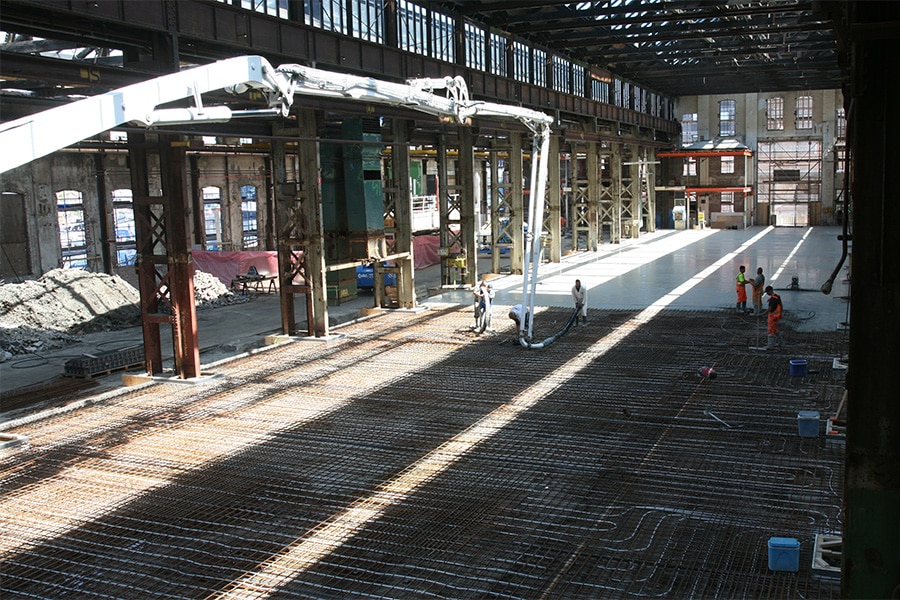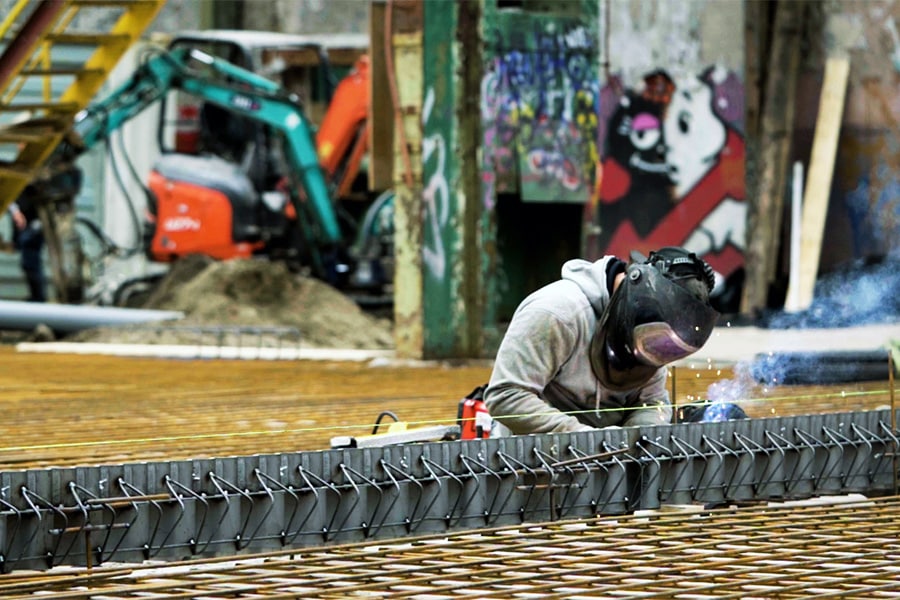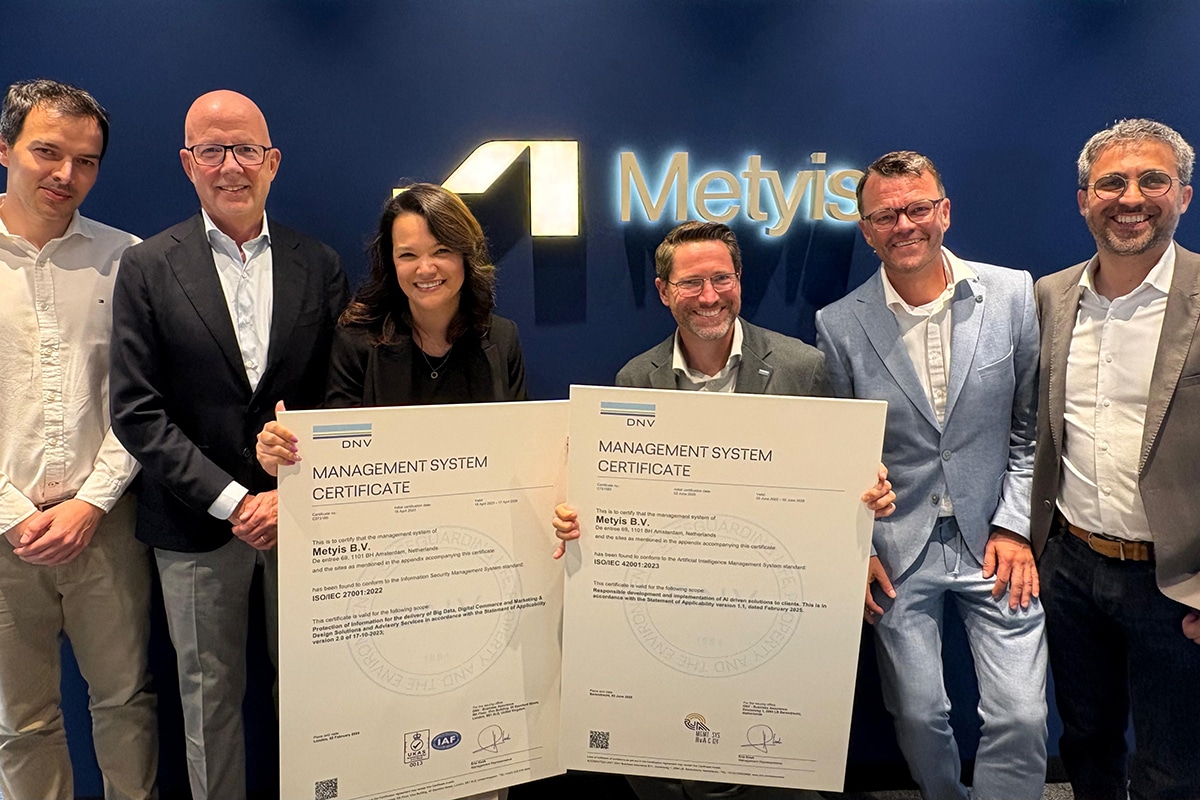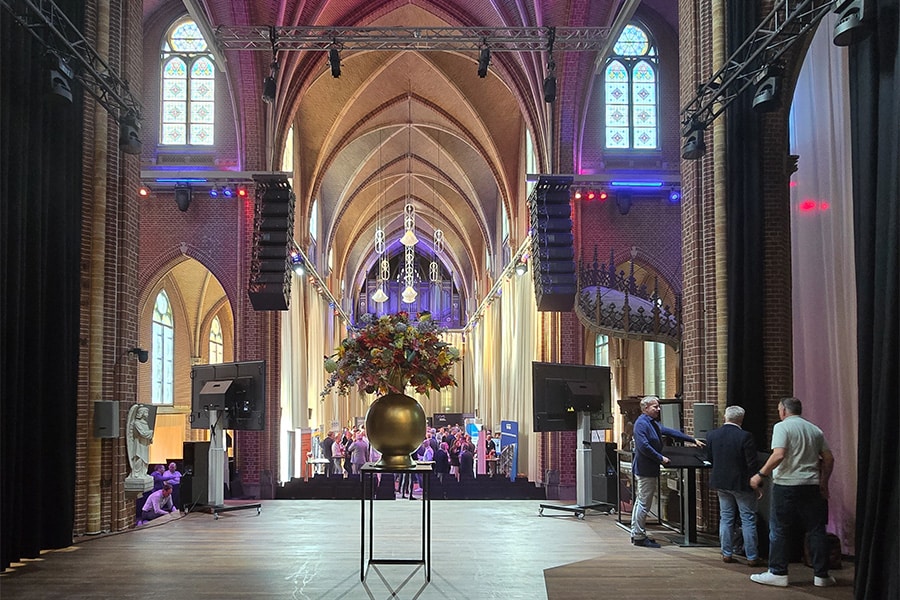
Southern Concrete Repair Afternoon 2025 on the theme of AI
On March 27, the DomusDela church in Eindhoven was the wonderful location for a well-attended Southern Concrete Repair Afternoon. The meeting, organized by the Concrete Maintenance Platform (BOP), focused on Artificial Intelligence and the role this tool can play in the life extension of buildings and artworks.
Religious heritage may be a fitting backdrop, for an inspiring afternoon on concrete maintenance under the motto "never demolish again. The Paterskerk, now DomusDela Church, from the late 19th century was recently converted into a multifunctional center. A fine example of a rock-solid structure capable of surviving for centuries. Are we no longer able to build for the ages? Architectural historian Herman Wesselink, an authority on church buildings in the Netherlands, points out in his talk that the church was solidly built with brick and wood. "In many more modern religious works of concrete you sometimes see problems with reinforcement corrosion after only decades. In that respect, architects Bekkers and Hegener, students of Pierre Cuypers, did a more solid job." Wesseling calls the transformation into a multifunctional center and conference venue a wonderful example of how we can deal with religious heritage.
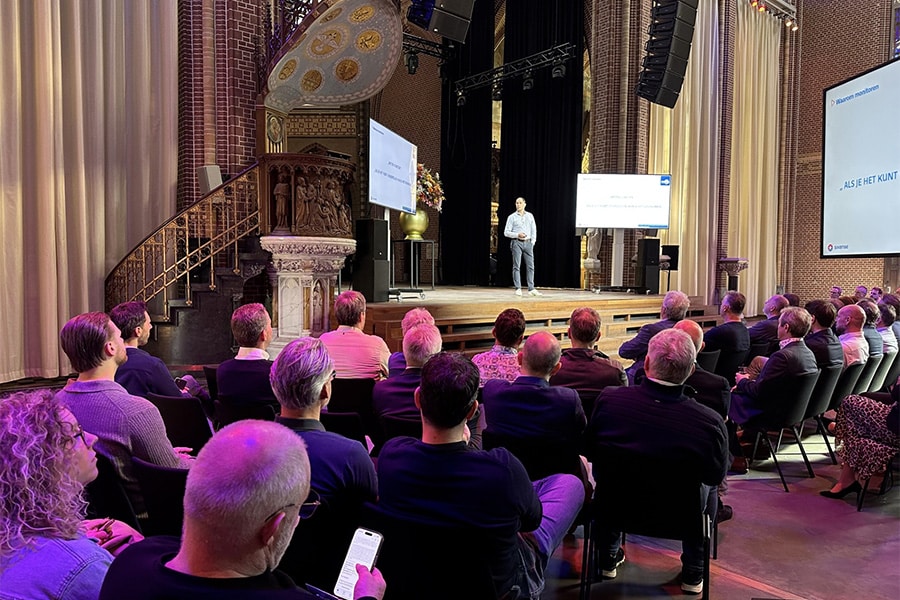
The task requires the use of AI
Next to speak was Bart Brink of the Top Consortium for Knowledge and Innovation (TKI) in Construction and Technology. With a series of figures, he made it clear that without tools such as AI, we are not going to solve the enormous conservation and sustainability task facing the Netherlands. "A major leap of scale is needed to renovate and make sustainable the 7 million homes, 1 million utility buildings and over 87,000 artworks." With the construction industry's labor productivity lagging tremendously behind other sectors, the very slow adoption of digital technologies in construction (mostly limited to automating administration), and the increasing scarcity of personnel, we are thus running into a wall. Especially in applying to repetitive tasks, AI can play a role to free up time for scarce technical personnel to be more productive in other areas. Brink especially stressed the importance of collaboration in the industry, because that does put AI within reach for many companies. The biggest pitfall: that the gap between IT experts and people on the shop floor becomes too big.
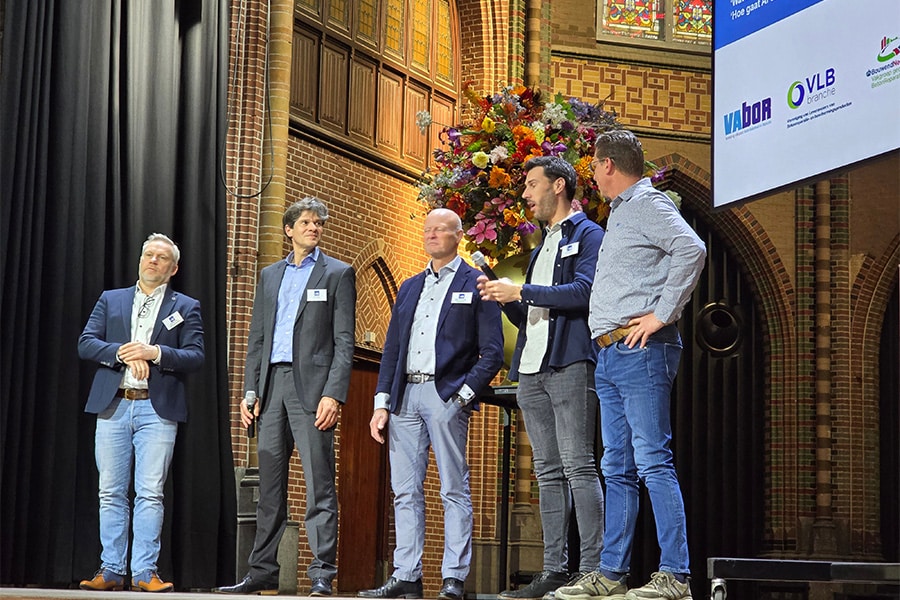
Panel
The panel discussion led by Bart Brink featured comments from the various chairs of the industry associations of the Concrete Maintenance Platform. Rob Wiedemeijer (Vereniging van Leveranciers van Betonreparatie en beschermingsmiddelen - VLB) pointed out the risk of sharing data versus protecting investments in production processes and innovation. For Jelle Lecluijze (Association of Advisors in the Field of Concrete Maintenance and Repair - VABOR), we need to remain critical of the quality of all data that become available and how we assess structures. Much of the discussion focused on the human factor. Christian Carlie (Vakgroep gecertificeerde BetonReparatiebedrijven - VBR) stated that technical people are leaving the profession and specialist knowledge is disappearing with them. So retaining professionals is already difficult, but my those who are there now also the people who can pick up AI? William van Lissum (Stichting Opleiding tot Betonreparatie Specialist - OtBS) noted that training programs have a fixed assessment framework with curricula and exams. Integrating AI into that is already difficult in a conservative industry. So there are concerns about the use of AI, but also positive sounds. On behalf of the KB Knowledge Center, Fons Bots emphasized that cathodic protection already works in a data-driven way and that AI is being used to reduce work pressure. Lecluijze is also positive about the opportunities offered by AI to simplify "low-value" inspection work through image recognition, for example, although we should not blindly trust AI's output.
Structural Health Monitoring
Concrete technology was the theme of Marcel de Wit, business development manager at BU Sixense Monitoring, after the break. He outlined in a nutshell the vast array of instruments used to "talk" structures today and how the resulting data can be harnessed. Sensors can measure cracking, corrosion, settlement, slope and other stress factors. Analysis is done in Structural Health Monitoring (SHM). De Wit says AI is playing an important role these days. Among other things, it can make SHM more accurate and further automated and is playing an increasing role in data analysis, damage detection and predictive maintenance.
Philosopher and comedian Paul Smit rounded off the afternoon with a humorous presentation in which he showed the sometimes inimitable workings of our brain. It is still that brain that has to solve that maintenance task of buildings and works of art. If the capacity of our brains cannot cope with that - and it looks like it will, we will have to call on AI. Afterwards, Anthony van den Hondel (chairman of the day) thanked Angelique Nagtegaal for the flawless organization.
